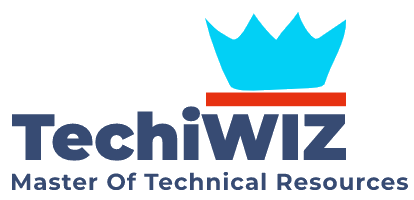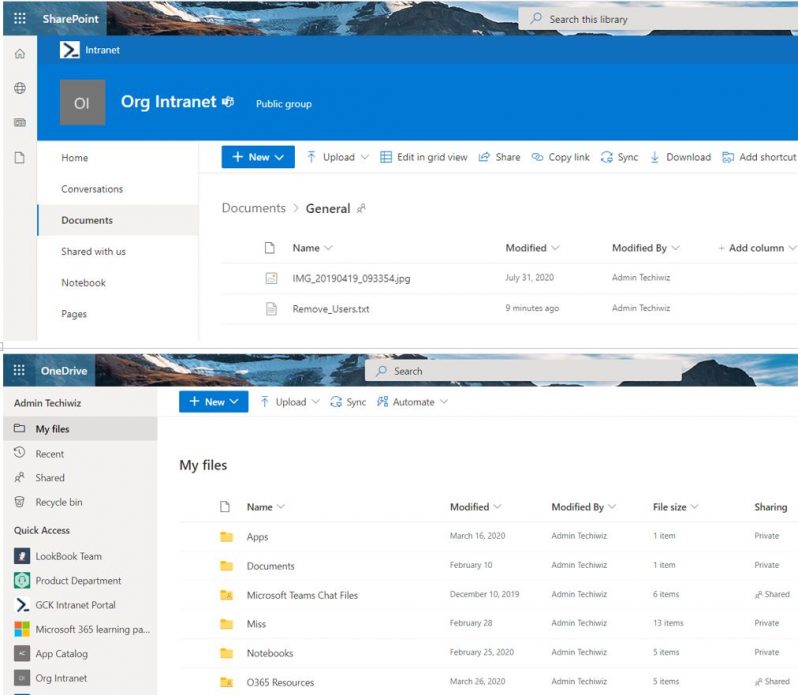Table of Contents
Introduction
In today’s fast-paced and highly competitive business landscape, enterprises are constantly seeking ways to optimize their processes and gain a competitive edge, that is called Enterprise Automation.
One strategy that has gained significant traction in recent years is the integration of artificial intelligence (AI) and robotic process automation (RPA) into enterprise intelligence automation operations. AI and RPA, when used together, provide organizations with the ability to automate tasks, improve efficiency, and enhance overall productivity.
As more and more organizations embrace RPA, they are starting to witness the initial returns on investment (ROI). However, scaling up RPA implementations to an enterprise level presents its own set of challenges.
What is Enterprise Automation RPA?
Enterprise Automation RPA refers to using software robots to automate repetitive tasks in organizations. It streamlines processes, increases efficiency, and reduces errors. RPA bots mimic human interactions with computer systems, performing tasks like data entry and processing across various applications.
This approach improves productivity, and accuracy, and frees up human employees for more strategic work. RPA involves identifying processes, designing and developing automation workflows, testing and deploying bots, and monitoring and maintaining their performance.
By using AI and machine learning algorithms, RPA can also deal with unstructured data, make decisions, and adapt to dynamic scenarios. The combination of AI and RPA enables you to achieve a higher level of automation and efficiency, freeing up your human resources to focus on more complex and strategic activities. Overall, it brings cost savings, scalability, and compliance benefits to businesses.
RPA Shaping Enterprise Automation
Robotic Process Automation, or RPA, is a technology that allows organizations to automate repetitive, rule-based tasks by mimicking human actions. By leveraging AI and machine learning algorithms, RPA can handle unstructured data, make decisions, and adapt to dynamic scenarios. The combination of AI and RPA enables organizations to achieve a higher level of automation and efficiency, freeing up human resources to focus on more complex and strategic activities.
Growth Factors of the RPA Industry in Enterprise Automation
- The RPA industry has been growing rapidly in recent years, thanks to its market size and the driving forces behind it. The RPA industry was valued at approximately $1.3 billion in 2020 and is projected to reach around $7.6 billion by 2028, exhibiting an impressive compound annual growth rate of 25%. Some of the factors that contribute to the growth of the RPA industry are:
- The increasing demand for automation and digital transformation across various industries and sectors
- The rising need for cost reduction, error prevention, and compliance enhancement
- The availability of user-friendly and scalable RPA platforms and tools
- The emergence of cloud-based and hybrid RPA solutions that offer flexibility and security
- The integration of AI and RPA capabilities enables more intelligent and advanced automation.
How Can You Benefit from RPA Implementation?
RPA implementation can bring significant benefits to your organization, such as:
- Improved operational efficiency: RPA can reduce manual errors, increase accuracy, speed up processes, and optimize resource utilization.
- Enhanced customer satisfaction: RPA can improve service quality, responsiveness, consistency, and personalization for your customers.
- Increased employee engagement: RPA can free up your employees from mundane tasks and allow them to focus on more creative and value-added activities.
- A higher return on investment: RPA can lower operational costs, increase revenue, improve scalability, and deliver quick payback.
To illustrate these benefits, here are some statistics and case studies of successful RPA implementation:
- According to Deloitte Global RPA Survey, 61% of respondents reported their expectations of cost reduction being met or exceeded by RPA implementation. The average payback period was less than 12 months.
- According to AIMultiple Research, 86% of respondents reported increased productivity after implementing RPA. 59% reported improved compliance and 57% reported improved quality.
- A global telecom company used RPA to automate its order management process. As a result, it reduced its order processing time from 20 minutes to 5 minutes per order. It also achieved a 40% reduction in operational costs.
- A leading bank used RPA to automate its account closure process. As a result, it reduced its processing time from 40 minutes to 5 minutes per request. It also achieved a 90% reduction in errors.
Strategic Areas for Implementing Enterprise Automation
Automation can be applied in various areas within an enterprise to streamline processes, increase efficiency, and improve productivity. Here are some common areas where enterprise automation strategy can be planned and implemented:
- Finance and Accounting: Automation can be used for tasks such as enterprise invoice automation processing, accounts payable and receivable, financial reporting, reconciliation, and payroll management.
- Human Resources: Automation can simplify and expedite HR processes like employee onboarding, benefits administration, time and attendance tracking, leave management, and performance management (Enterprise Workflow Automation).
- Customer Service: Automation can assist with customer support by automating ticket routing, response generation, and basic customer inquiries, as well as providing self-service options like chatbots or virtual assistants.
- Supply Chain and Logistics: Automation can optimize supply chain processes by automating inventory management, order processing, shipment tracking, and demand forecasting.
- IT Operations: Automation can help streamline IT operations by automating software deployment, enterprise test automation, system monitoring, incident management, server provisioning, and enterprise network automation.
- Data Entry and Data Processing: Automation can be applied to automate repetitive data entry tasks, data extraction from documents, data validation, and data transformation.
- Enterprise Marketing Automation: Automation can support sales and marketing efforts through lead generation, customer relationship management (CRM), email marketing, campaign management, and analytics in enterprise marketing automation.
- Compliance and Risk Management: Automation can assist in compliance activities by automating regulatory reporting, data privacy management, audit trails, and risk assessment processes.
- Project Management: Automation can be utilized in project management by automating task scheduling, progress tracking, resource allocation, and reporting.
- Administrative Tasks: Automation can be employed to automate various administrative tasks like email filtering and sorting, document management, appointment scheduling, and calendar management.
It’s important to note that not all tasks or processes are suitable for automation, and careful evaluation should be conducted to identify areas where automation can deliver the most significant benefits in terms of time savings, cost reduction, and improved accuracy.
Geographical Trends and Industry Consolidation in RPA
When examining the geographical aspects of RPA, investments tend to be concentrated in the United States and Europe. Higher wages in these regions make the deployment of robots more cost-effective. However, the adoption of RPA is not limited to these regions, and other parts of the world are also embracing this technology.
Additionally, a notable trend within the RPA industry is the ongoing consolidation among enterprises. Major companies like Microsoft, IBM, Google, Salesforce, and UI Path have acquired smaller RPA companies, indicating a consolidation trend. These acquisitions by tech giants suggest forthcoming standardization and integration efforts with larger vendors.
Scaling Up RPA Initiatives: Key Considerations and Risks
As enterprises aim to scale up their RPA initiatives, they must carefully consider various factors and associated risks. One crucial aspect is selecting the right processes for automation, as this greatly influences the success of an RPA implementation. Not all processes are suitable for automation, and organizations should focus on identifying those that are repetitive, rule-based, and time-consuming.
Enterprises must also ensure they have the necessary prerequisites in place to enable the rapid scaling of their robots for long-term RPA implementation. These prerequisites include a well-defined governance structure, a supportive IT department, and the identification of personnel who can be transitioned into new roles within the organization.
Implementation risks in scaling up RPA initiatives include an imbalance of change capacity, the integration of the robot layer into the maintenance organization, and addressing bot security vulnerabilities. To mitigate these risks in enterprises automation should carefully plan and allocate resources for managing the changes brought about by RPA implementation.
It is important to involve stakeholders from different departments and ensure clear communication and training programs are in place to facilitate a smooth transition. Integrating the robot layer into the maintenance organization involves establishing effective processes for monitoring, managing, and maintaining the RPA bots to ensure their optimal performance.
Bot security vulnerabilities should also be addressed by implementing appropriate security measures, including access controls, encryption, and regular vulnerability assessments.
Procurement-related risks in scaling up RPA initiatives revolve around selecting vendors that can scale up to meet organizational needs, adopting a focused approach to RPA software procurement, and leveraging low-code and pre-built bots for cost-effective implementation. Organizations should thoroughly evaluate potential RPA software vendors based on specific selection criteria tailored for RPA.
Factors such as ease of use, scalability, security features, vendor support, and compatibility with existing systems should be considered. By selecting the right vendor, organizations can ensure that the chosen RPA solution aligns with their unique requirements and long-term objectives of enterprise automation.
Additionally, organizations can explore the use of low-code platforms and pre-built bots, which can expedite the implementation process and reduce costs.
Enterprise Automation Strategy for Successful Scaling
To successfully scale up RPA initiatives for enterprise automation, organizations should consider the following key considerations:
1. Centralized Management: The Role of the Center of Excellence (CoE)
Implementing RPA at an enterprise automation level requires a well-defined governance structure. The Center of Excellence (CoE) has proven to be a best practice for scaling out RPA. The level of centralization of the CoE depends on the organization’s unique environment. Factors such as robot development, monitoring, procurement processes, and the feasibility of automating processes locally versus centralizing them should be carefully evaluated.
2. Involving the IT Organization: Collaboration is Key
The involvement of the IT department in scaling out RPA is crucial, particularly in change management, aligning with the technical roadmap, and exploring alternatives to RPA. Collaboration between IT and RPA teams ensures a holistic approach, aligning technological advancements with business goals and enabling effective change management practices.
3. Selection Criteria for Software Vendors
Choosing the right RPA software vendor is pivotal for a successful RPA journey. Specific selection criteria tailored for RPA should be considered. Factors like ease of use, scalability, security features, vendor support, and compatibility with existing systems should be thoroughly evaluated. This ensures the selection of a vendor that aligns with the organization’s unique requirements and long-term objectives.
4. Implementation Partners: In-house or Outsourcing?
Determining whether to engage an implementation partner depends on several factors. Assessing the technical proficiency of the organization, the availability of RPA specialists in the market, and the potential for RPA to act as a differentiator are critical considerations.
If RPA will be leveraged to automate primary processes that offer a competitive advantage, developing in-house capabilities is advisable. However, for secondary processes, outsourcing implementation and maintenance may be a viable option.
By carefully considering these key considerations and addressing the associated risks, organizations can successfully navigate the complexities of scaling up their RPA initiatives. In our next blog post, we will delve deeper into the best practices and strategies for implementing RPA at an enterprise level, enabling organizations to optimize their processes and achieve increased efficiency.
Popular RPA Enterprise Automation Platform (Tools):
Following are some popular enterprise automation platform tools names that you can use:
- Automation Anywhere: Cloud-native platform combining RPA, AI, and analytics for automating complex business processes. User-friendly interface with drag-and-drop functionality. Automation Anywhere Enterprise is a good tool.
- UiPath: End-to-end platform with Studio, Orchestrator, and Robots for automating repetitive tasks. Features include screen scraping and data extraction.
- Blue Prism: Digital workforce automation tool for complex processes. Offers a drag-and-drop interface, process analytics, and scheduling capabilities.
- WorkFusion: AI-powered automation platform integrating RPA, AI, and analytics. User-friendly interface with features like data extraction and process analytics.
- Power Automate Desktop: RPA solution automating repetitive tasks across desktop applications. Offers a user-friendly interface, action recording, and workflow creation.
Summary
Enterprise Automation, the integration of AI and RPA, helps organizations automate tasks and improve efficiency. The RPA industry is rapidly growing, driven by demand for automation and cost reduction. Implementing RPA brings benefits like improved productivity and customer satisfaction.
It can be applied in finance, HR, customer service, supply chain, IT, data entry, marketing, compliance, project management, and administration. RPA adoption is concentrated in the US and Europe, but other regions are also embracing it.
Scaling up RPA requires careful process selection and addressing implementation and procurement risks. Key considerations include centralized management, involving IT, selecting the right vendors, and deciding on in-house or outsourced implementation. Successful RPA implementation optimizes processes and leverages AI capabilities.




